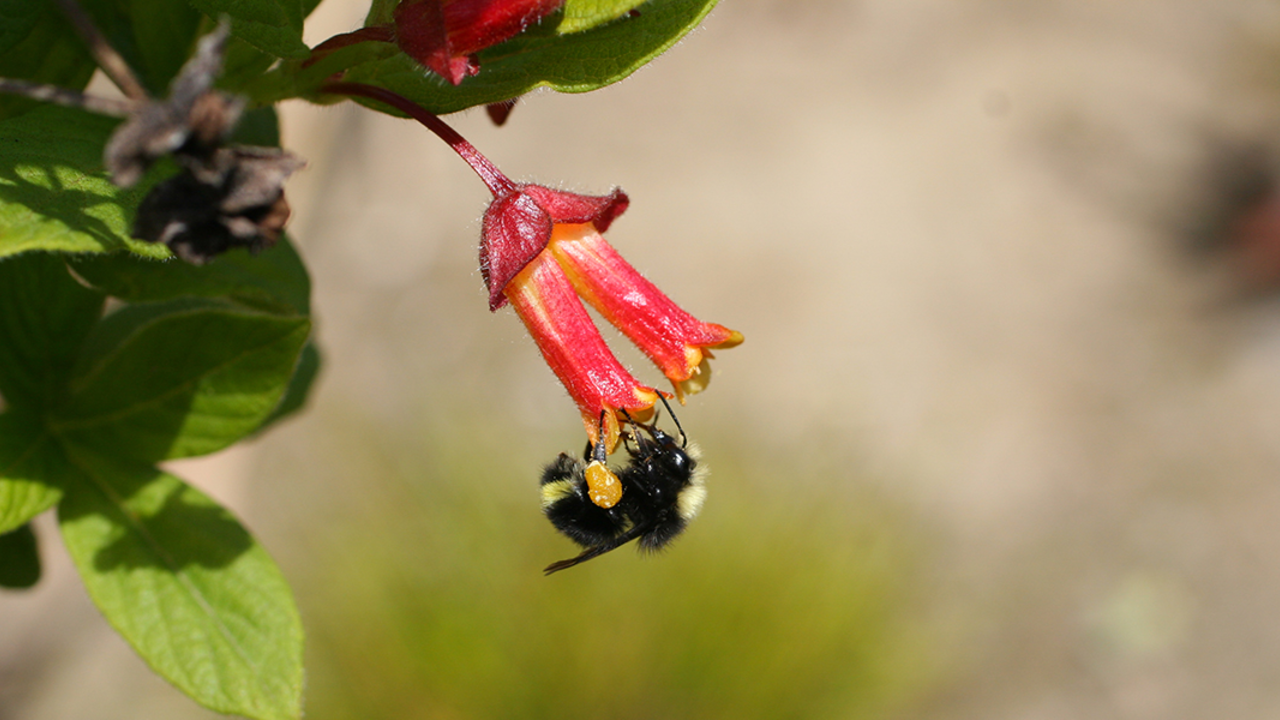Why bees are so important in the Golden Gate National Parks and beyond

Will Elder/National Park Service
By Elizabeth Aldenderfer
Park Stewardship Trail Crew Intern
Two annual holidays, World Bee Day on May 20 and National Honey Bee Day on the third Saturday in August, help celebrate the tiny creatures we see feasting on our flowers. Why all this attention on the tiny insects?
Americans can thank the European honey bee (Apris mellifera) for pollinating more than one third of the food we eat! This bee is one of only 7-12 species of honey bee worldwide, who, along with its honey bee relatives, pollinate one sixth of the world’s flowering plants. That includes about 400 agricultural crops! It was introduced in the United States in 1622, and by the mid-1800s, had found its way to California.
While honey bees tend to get all the attention in the U.S. because of their role in agriculture, it is important to note that species native to the U.S.—like bumble bees and carpenter bees—play an enormous role in maintaining this country’s rich ecological landscapes. Indeed, the tiny livestock actually thrive in areas where diverse flowers, and therefore diverse pollen, is readily available. The pollination and cross-pollination of the world’s plants helps maintain biodiversity in a world where monoculture and urbanization increase every day.
It seems we see bees buzzing around just about any plant, but what are their favorite flowers? Many are fruits, like pear and apple trees; others include mint, thyme, willows, and blackberries. Local plant species? Bees love native California flora! Coffeeberry, catmint, tidytips, lilac, California buckwheat, and California poppy dot Bay Area landscapes, and are among the bees’ favorite plants to drink from.
Development, viruses, and pesticides are all contributing to bees’ population decline. If you’re wondering what to do with that empty green space in your garden, consider spreading some local wildflower seeds, or any of the native California flora mentioned above. Bee sure to say hi to your new buzzing friends when they move into your backyard! And remember, contrary to popular belief, most bees are not aggressive by nature—they’re just looking for some yummy nectar (and maybe a sip of your sweet tea).